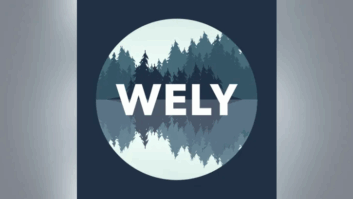You know the old joke about radio and television stations. They sell you “time.” Ha, ha. They sell you something that they can’t ever own. They can’t box it, change it. But they can sell it!
And pretty much the same way, cable manufacturers sell you air. Perhaps I should say, the highest quality manufacturers sell you air. Because, in fact, they do. Why? It all comes down to speed.

How do we put air or nitrogen into a cable? The old way was to put space inside a cable that will fill up with air. Of course we cable guys don’t call it speed, we give it a $5 term. We call it velocity. And since it moves, or propagates down the cable, we actually call it Velocity of Propagation, or Vp. Now you may think that signals travel down wires at the speed of light (a Vp of 100 percent). But you would be wrong.
First of all, Vp=100 percent occurs only in one material, in a vacuum. Now if you figure out how to put a vacuum inside a cable, and keep everything in place and stable at the same time, you would be very famous and possibly very rich. Instead, we use air. Well, sometimes we use air. These days we probably use nitrogen. And you transmitter jockeys would understand that. You pressurize your lines with either (1) dry air or (2) nitrogen. Air is mostly nitrogen and using nitrogen, especially inside cables, allows very precise control.
Now a cousin to Vp is the dielectric constant, or DC. This is a number that describes how good a particular material is, electrically speaking. All non-conductors have a dielectric constant. Table 1 is a short list of common plastics and their DC and Vp.
You can see a vacuum is the definition of dielectric constant. Air (or nitrogen) is just slightly worse. How do we put air or nitrogen into a cable? The old way was to put some space inside a cable. That space will fill up with air. There are two problems with this design.

Table 1 The first problem is that the conductor is supported by the helix of plastic only every so often, so the center conductor can have subtle changes in position, a wobble, that repeats over and over again. This shows up at high frequencies as “periodic” losses at a specific frequency (the “fundamental”), and all the harmonics of that frequency. Still, cables of this design are reasonably good up to 4 GHz or so. In small cables, such as RG-8, manufacturers could get up to 84 percent Vp. That was the highest velocity for small coaxial cables for more than 20 years.
The second problem is that even a slight flaw in the jacket can let in moisture. Water is different than air, so this can change the impedance of the cable, which again affects high frequencies. If you’ve gotten water inside a transmission line, you know what I’m talking about. Serious impedance problem with huge reflections. [Ed. Note: We point out another quality of water: It’s a semi-conductor. A radical reduction in voltage peak breakdown characteristics results. Arcing and burning can start a fire that destroys the cable.]
A better way is to add air to plastic, to foam the plastic, to improve performance. Water can’t get through foam as easily as an open space, so a foam version is better outside than a “tube” transmission line. The problem is that it is hard to put enough air in a foam to approach the kind of velocity you can get from that open tube style.
In big 50 ohm hard line, you can get past 90 percent Vp. That’s with spacers at the ends of each section, everything else is copper pipe and air (or nitrogen). If you put that much air in a foam, it becomes very soft. (Duh, it’s mostly air!) That would allow the center conductor to move around (“migrate”) and the impedance of such a cable would be all over the place. What you really need is a foam that is very hard despite being mostly air.

Table 2 The first version of foam in cables was made using a foaming compound, a chemical added to the plastic as it is melted and squeezed onto the wire. It’s like that stuff you use in the shipping room. Pour the two compounds in and close the box very fast (or you never will). The problem with this compound in cable is that you end up with three things inside the cable: plastic, air and the foaming chemicals themselves. Those left-over chemicals affect the velocity. So the best these cables could do was 78 percent Vp. Of course, that’s a lot better than solid polyethylene at 66 percent (Table 1).
So, for the last 30 years, one of the major technological innovations was the perfection of hard-cell high-density foam. It consists of tiny bubbles, so small you need a microscope to see them. Tiny bubbles have much more surface area than big bubbles. They are also harder to deform or change their shape. And as manufacturers got better and better, the velocity went up and up. Table 2 shows the percentage of air (or nitrogen) in different velocities.
Eighty-six percent is now the cutting edge of this technique, currently available in 50 ohm cable of various sizes. It’s truly giving hard line a run for its money.
So, the horrible truth is that high-quality cable manufacturers not only sell you air, but the more air they put in a cable, the more they charge you.
How much air would you like?
Steve Lampen has worked for Belden for 16 years and is multimedia technology manager. His latest book, “The Audio-Video Cable Installer’s Pocket Guide” is published by McGraw-Hill.







